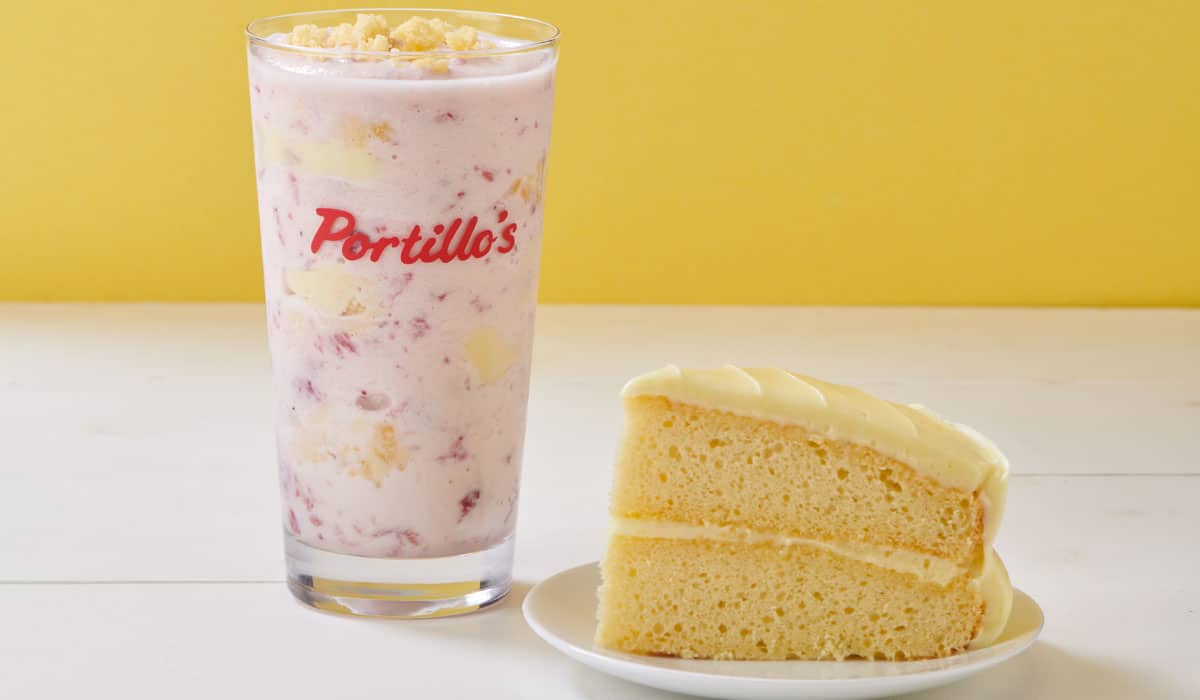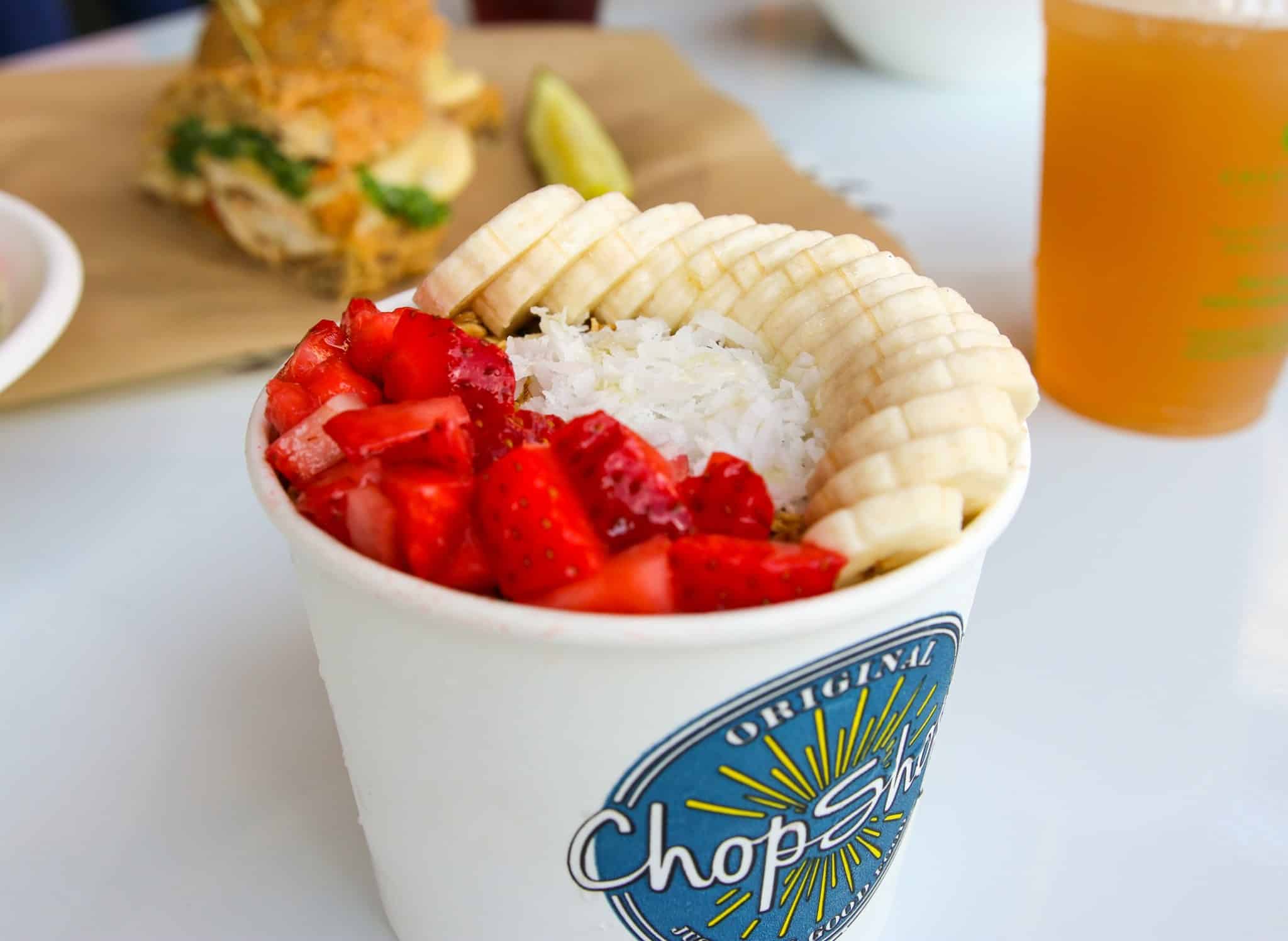The COVID pandemic has accelerated the industry’s move toward convenience and pushed operators to focus beyond the four walls.
But it’s not a simple road. There’s been tension between restaurants and third-party delivery companies because of high fees, causing several cities to install a temporary cap. More brands are bypassing these fees by forming first-party platforms so the order originates on their website and app.
The next step in that evolution, albeit a pricey one, is hiring internal delivery drivers, thus eliminating any third-party involvement. Original ChopShop and Portillo’s are two brands that have leapt toward this opportunity.
Four years ago, the Original ChopShop began laying the foundational blocks to elevate its digital presence.
To assist with that process, the now 15-unit company signed a deal with Olo to set up its digital platform. CEO Jason Morgan says the brand was attracted to the Dispatch feature, which allows it to take the order and auction it off to a third-party delivery driver.
READ MORE: How the Uber and Postmates merger impacts the industry
However, Morgan says the downside was that restaurants still didn’t control the full experience. The company had to rely on third-party drivers to be on time, take orders, and be courteous.
So when Original ChopShop received funds from the Paycheck Protection Program, the restaurant decided to bring people back to work and overstaff stores.
That’s when Morgan and his team tried an experiment—an internal delivery program.
“One of the things we did with the extra hours, we said let’s [turn off DSPs], and let’s just use our own people to deliver these food orders. And what was pretty interesting was within the first couple of weeks, we saw our number of orders through Dispatch double,” Morgan says.
The brand partnered with Onfleet, which made the process more automated and allowed them to “create a driving company within a company.” The drivers have an app and receive the order through Dispatch. The restaurant drivers get priority on the order, and if there’s any overflow, the order goes to a third party.
Morgan says the program fits with the brand’s identity, which is built on convenience. On average, food comes out in roughly four and a half minutes.
There’s about six or seven drivers per store, although not at the same time. They’re focused on covering the lunch and dinner shifts.
“It’s pretty awesome in terms of how it works,” Morgan says. “It’s really allowed us to control that process from beginning to end.”
The implementation of internal delivery is in conjunction with the roll out of a new app and rewards program. Morgan says the app pushes people to order digitally whether it’s pickup, curbside, or delivery.
He adds more than 50 percent of orders originate on the company’s digital platforms, but the goal is to control all of it.

Portillo’s, a 62-unit fast casual based in Chicago, has the same objective.
Dino Northway, Portillo’s senior manager of off-premises dining, says the restaurant always knew it wanted to own the delivery experience, and COVID only validated that wish. He explains Portillo’s self-delivery program was a way for the brand to get outside the four walls and bring its “world-class experience” directly to guests.
The new program cross trains employees and allows them to earn wages plus tips. Drivers must be at least 18 years of age, have a vehicle, have a valid driver’s license, and must be able to show proof of insurance.
“The operations teams are world-class,” Northway says. “You can see it in the dine-in, the drive-thru, and now it’ll be with self-delivery. Part of the reason why Portillo’s historically has been committed to training. Instead of spending money on advertising, we spend money on training programs, and restaurants run like well-oiled machines. Our operators lead with greatness and train for greatness by setting standards and quality and service, and that’s how we reach our highest AUVs in the industry [$7.27 million].”
The company will continue to partner with DoorDash and Uber Eats. Internal delivery is being rolled out now and into September.
Northway says that for Portillo’s, it was a matter of thinking about where the restaurant industry is headed. The company just wants to ensure that it’s in control of its own destiny.
“Having our own delivery drivers, we can offer catering delivery and set-ups,” Northway says. “That’s something you can’t get through a third-party marketplace. We have a goal to create an unrivaled experience for our amazing guests and controlling the full experience from ordering through self-delivery is a way we can do that.”
When Morgan thinks about internal delivery, he’s reminded of the “unobtainable triangle”—fast, cheap, and quality. The idea is that a company can only master two out of three. For example, a restaurant can be fast and inexpensive, but there won’t be quality.
However, the way Original ChopShop is organizing delivery, all three can be accomplished. Morgan says orders from a company driver are 25 percent less expensive, delivered up to 15 minutes faster, and brought to customers’ doorsteps by an Original ChopShop employee.
Morgan will be the first to acknowledge that hiring, training, and retaining drivers is a daunting task. Profitability becomes an issue because the restaurant needs enough deliveries to make money or breakeven. Margins are thin, and there’s little room for error.
He adds that so far, Original ChopShop is reaching that profitability in terms of fees versus expenses used to deliver the orders.
The CEO says it’s about combining the right people, training, and tools with accurate and timely data.
“We’re constantly watching what’s happening and tweaking it. It’s one of the benefits of being the small company that we are,” Morgan says. “We’re very nimble and can pivot when we need to pivot, and so I think that’s what will ultimately make us successful. … The more we do it right, the more we’re going to drive additional business to us. It is going to have this snowball type of effect.”





